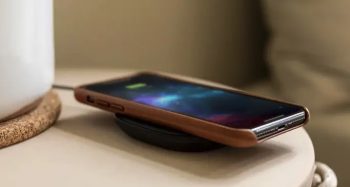
Understanding the difference between Qi, Qi2, and MagSafe
These days, pretty much the majority of smartphones out there support wireless charging. This means that if you’ve got a wireless charger, you will be able to use it to wirelessly charge your phone.
But did you know that when it comes to wireless charging, there are different versions? For the most part, a lot of wireless charging devices and accessories out there rely on the Qi wireless charging standard, but did you also know that there is a Qi2? Also, with Apple’s MagSafe being so similar to Qi2, you might be a little confused as to what’s the difference.
The good news is that if you’re looking to clear up any confusion you might have, you’ve come to the right place as this handy article will help you navigate through all these wireless charging protocols.
Qi versus Qi2
Qi is a wireless charging standard developed by the Wireless Power Consortium more than a decade ago until January 2023 where the organization announced the next-generation standard in the form of Qi2.
You might see some chargers being listed online as supporting Qi2, but you might be wondering what’s the difference between Qi and Qi2? Is it speed? Is it power? That’s where it gets a little complicated.
Qi offers wireless charging speeds of 5W up to 15W, and Qi2 essentially offers the same at 15W, but it could also, technically, be faster. This is because of how wireless charging works.
Wireless charging relies on coils inside of the charger and your phone. The coils need to be perfectly aligned in order for the wireless charging to begin. When the coils are not aligned properly, your phone may still charge but it will be at a slower rate which you may or may not notice.
In turn, this generates more heat which in the long-term could damage your batteries, leading to it losing its lifespan and ultimately holding less charge.
With Qi2, the WPC has introduced the use of magnets. By using magnets, it allows your phone and the charger to align perfectly, thus unlocking the full 15W potential and charging your phone at the max speed possible while keeping the heat down and preserving your phone’s battery life in the process.
Qi2 versus MagSafe
Based on our earlier description of Qi2, it sounds a lot like MagSafe and that’s because it is. Apple is part of the WPC and to help the development of Qi2, Apple actually provided the organization with its MagSafe technology, resulting in Qi2 being very similar to MagSafe in terms of speed, power, and design.
Both Qi2 and MagSafe rely on a ring of magnets to align the phone with the charger, and in turn that allows the charger to output its max charging speeds of 15W. The main difference lies in branding.
MagSafe is supported on the iPhone 12 onwards, which means that technically you could use a Qi2 charger with an iPhone 12 instead of a MagSafe-branded one. The downside is that you won’t get the 15W of charging and will instead be limited to 7.5W. This is expected to change with the iPhone 15 series which does support Qi2 (although it has yet to be Qi2-certified).
This means that Apple could use its MagSafe brand to promote more “premium” chargers and accessories that are optimized for the iPhone, while third-party accessory makers could put out Qi2 chargers that are compatible with the iPhone, but might not hit that coveted 15W of charging speeds.
Fun Qi2 accessories
Apart from charging, Apple’s MagSafe technology unlocked a bunch of fun and interesting accessories for its phones. Users could rely on the magnet to attach things like phone holders, wallets, stands, tripods, and more.
With the introduction of Qi2, similar accessories are expected to make its way to future Android handsets as well. The only problem is that at this point in time, there aren’t any Android phones that have been released that have Qi2 support, although the WPC does note that we should be able to expect these devices in Q4 2023, so presumably we should start seeing more Qi2 compatible accessories around that time as well.
Backwards compatibility
So now that we know the difference between Qi and Qi2, what will happen if you buy an accessory that’s designed for Qi2 but your device only supports Qi? The good news is that it is backwards compatible.
You will be able to use a Qi-compatible smartphone with a Qi2 charger. The main difference is that your phone won’t be able to make full use of Qi2’s magnets to align the charging coils, so you might not be able to use it to its full potential.
In conclusion
Qi2 will be the new standard of wireless charging from the WPC moving forwards. With the benefits we listed above, we doubt that accessory makers will want to push out devices that still rely on the older Qi standard (unless it’s for cost-saving reasons).
Another benefit of Qi2 is that the WPC intends to be a bit more strict in their certification process. One of the requirements is that the magnets need to be strong enough to align the coils properly, otherwise the logo cannot be used.
We imagine that some accessory makers might not care and may simply refer to their accessories as being “Qi2-compatible” as opposed to “Qi2-certified”, which is what we’re seeing today from some third-party MagSafe accessories and chargers.
So, if you’ve already upgraded your phone this year, then your devices most definitely do not support Qi2, but if you plan to upgrade next year, you can probably expect Qi2 support in them.